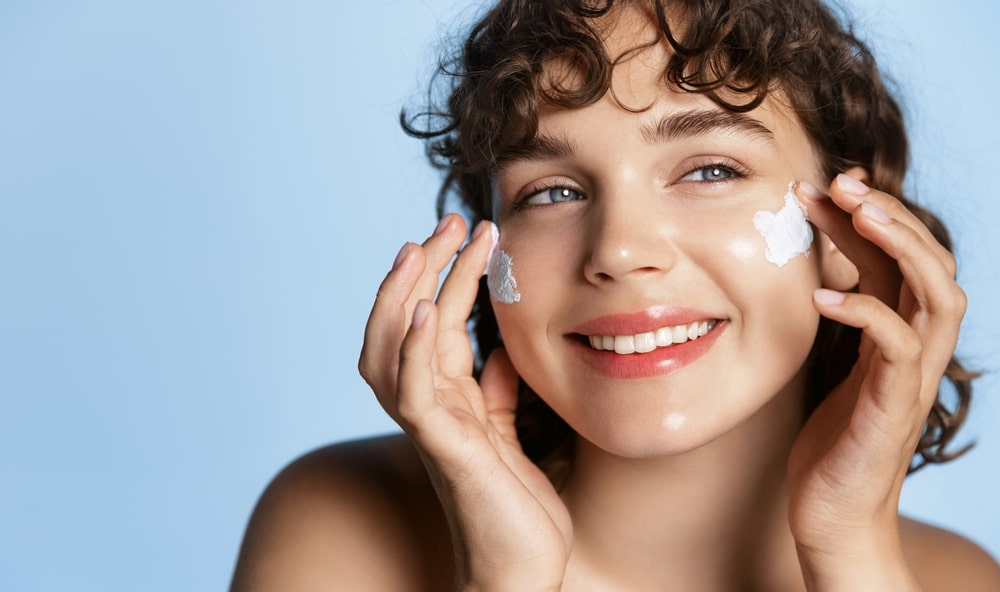Definition: “Skin care cosmetics products are the various classes of cosmetic formulations used to care, cleanse, and decoration of human skin”.
These products are mainly used to accomplish and maintain the skin clean, smooth, soft, and supple by removing makeup from the skin.
Table of Contents
TECHNICAL QUALITIES OF SKIN CARE PRODUCTS
1. Long-term stability: Stability must be checked for changes in color, smell, and viscosity of products.
Most skin care products are used over a long period after opening the package and may be vulnerable to deterioration and putrefaction.
2. Good adhesive property: The product should adhere easily and should remain where they are most effective, and that is on the skin surface.
3. Dermatological safety: These products must be dermatologically safe and should not cause any harm, either immediately (for example, by causing allergic reactions) or in the long term (for example, leading to cancer or natural defects) when used according to the directions.
4. Resistance to heat and humidity: Throughout the life cycle, products may be exposed to different conditions during their storage, transport, retail, and finally used by the consumer. Cosmetic products must ensure their stability and efficacy for consumers during their whole shelf life which is established by the producer.
5. Appropriate rheological properties: All types of skin care products should possess desired rheological properties to enable the product for ease of removal from the final container (extrudability) as well as for ease of application (consistency) and when it is at rest.
6. Appropriate texture: Cosmetic products such as shampoos, conditioners, and leave-on hair care products should possess good texture to feel while using but not give the “coarse” and “stuck” feeling of the hair while rinsing.
7. Sensory properties: Good cosmetics give a feel consistent with the purpose of use when applied on the skin, hair, and other body parts. The impressions felt by the consumer and sensory properties of skin care cosmetics such as „moisturizing‟, „smooth‟, „silky‟ and „soft‟ (depending on the type of the product) are indispensable in the successful development of cosmetics products.
CLASSIFICATION OF SKIN CARE PRODUCTS
1) Loose powders: Face powders, baby powders, prickly heat powders, and deodorant powders.
2) Compact powders: Face powders, solid lip rouge.
3) Creams: Foundations creams, cold creams, vanishing creams, emollient creams, moisturizing creams, anti-wrinkle creams, face rouge, and creams for caring for the skin of the face.
4) Solutions: Beauty essences (rose water), lotions, suntan lotions, sunscreens, cleansers, cosmetic oils and essences, massage oils, and body conditioners.
5) Lotions: Shaving lotions (facial), shaving lotions (body), astringent lotions, facial conditioners, facial packs, massage lotions, and skin toning lotions.
6) Colorants: Lipsticks, rouges (powders and creams).
7) Sprays: Foot sprays, body sprays, etc.
RAW MATERIALS
- Bases
- Solvents: Water, oils, silicones
- Surfactants
- Thickening agents
- Skin conditioning agents
- pH buffers
- Abrasives
- Preservatives
- Stabilizers
- Emulsifying agents
- Absorbents
- Colors
- Fragrances
- Special ingredients
- Functional ingredients
FACE WASH
- To remove deeper seated debris and also cleanse skin pores, due to its excellent foaming action.
- These are effective as cleansing products on daily practice that keep the skin fresh and clean.
- As a substitute for soap because of the many benefits of face wash products compared to normal body soap.
- Face washes work better than soap because they tend to be less heavy-handed, and comprise additional ingredients that soap does not.
- overcome the drawback of soaps which are extremely alkaline and can cause irritation, dryness, and scaling
Application for face wash
- Helps to improve skin complexion
- Helps rejuvenate the skin
- Helps to control excessive oil.
- Helps to nourish the skin and make the bright and radiant.
Examples:-
1. Papaya rehydrating face wash
2. Neem tulsi face wash
3. Sandal almond face wash
Uses of Face Wash
- Pimples.
- Acne.
- Scars.
- Dark Spots.
- Dark Circles.
- Uneven Skin Tone

Advantages of Face Wash
- Rejuvenation of the skin
- Deals with flaky skin
- Removes dead skin
- Imparts glow to the skin
- Removes scars
- Makes smooth and soft skin
- Suntan removal
- Increases blood circulation
Disadvantage of Face Wash
- Dry skin
- Feeling warm
- Redness of skin
- Abnormal peeling of skin
- Stinging of skin
DIFFERENCES BETWEEN FACE WASH AND FACIAL CLEANSER
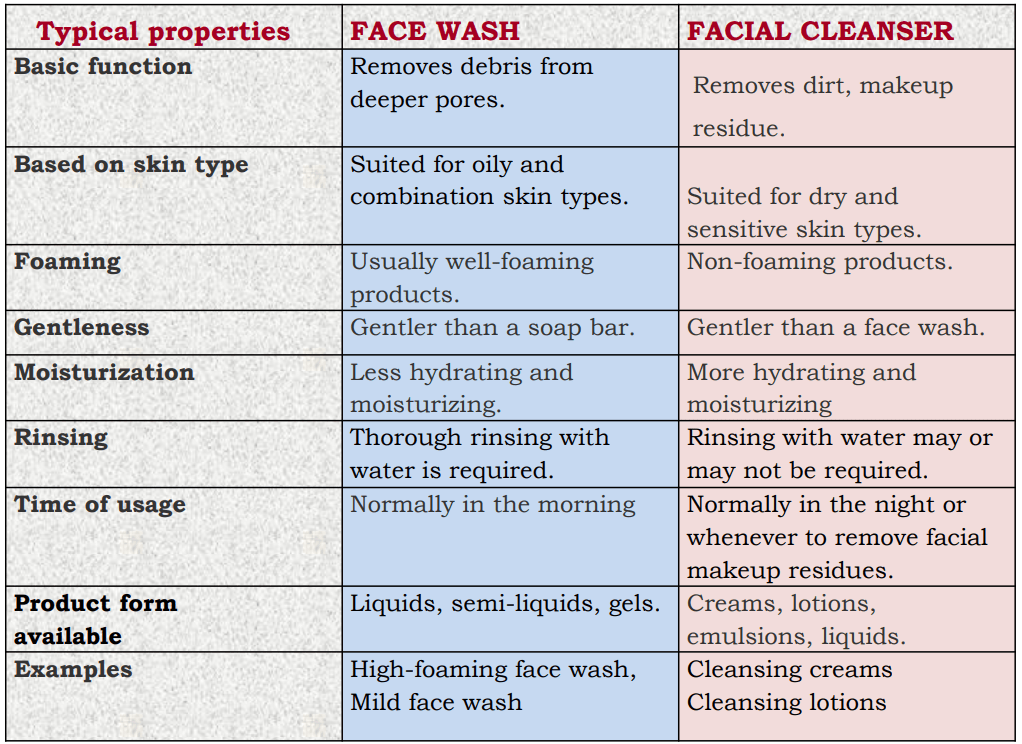
FORMULATION OF FACE WASH
1. Surfactants: They remove dirt and oil from the skin.
Ex: Sodium lauryl sulfate + cocamide Sodium C14-16 Olefin sulfonate
2. Emollients: To prevent the dryness of the skin.
Ex: Petrolatum, lanolin, mineral oil and ceramides
3. Exfoliants: These act as skin brighteners.
Ex: Glycolic acid, Alpha hydroxy acid.
4. Humectants: Similar to emollients, it helps skin retain moisture.
Ex: Glycerin.
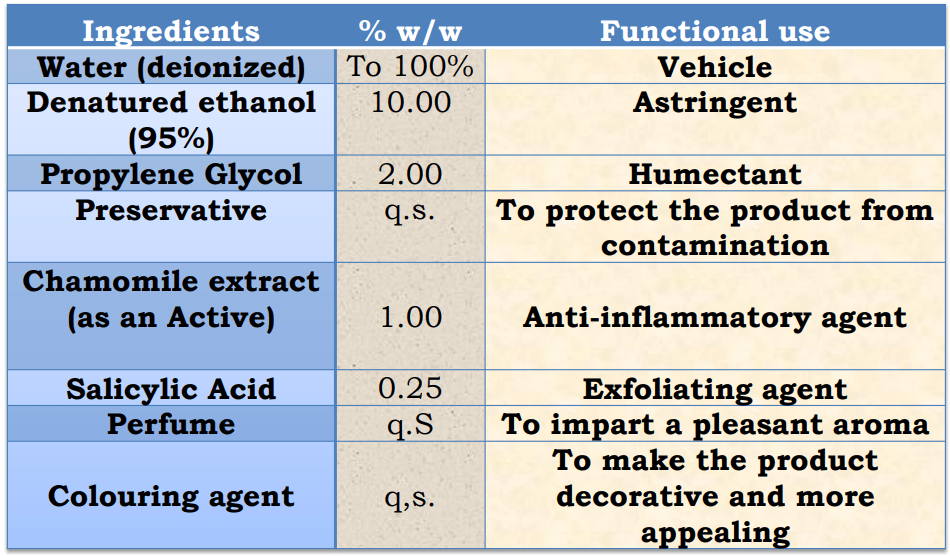
Description
- This formulation contains chamomile as an „active‟ used for its anti-inflammatory properties and helps to soothe the skin.
- This lotion does not contain any gritty particles instead, contains salicylic acid as the exfoliating agent for its keratolytic properties and thus helps in eliminating dead skin cells.
- It gently exfoliates the skin while moisturizing and thus helps to restore the skin‟ ‘s protective barrier.
MOISTURIZING CREAMS
- The term “moisturizer” is a generic term used to describe ingredients that add moisture to the skin.
- These moisturizing creams are specially designed to improve skin quality and maintain and/or restore skin moisture content.
- They also keep the skin smoother, and softer and help in alleviating the symptoms of dry skin such as roughness, cracking, and irritation.
- Four major types of moisturizers i.e., humectants, emollients, occlusives, and skin rejuvenators.
- Though these terms are often used interchangeably, each of these materials provides different benefits to the skin.
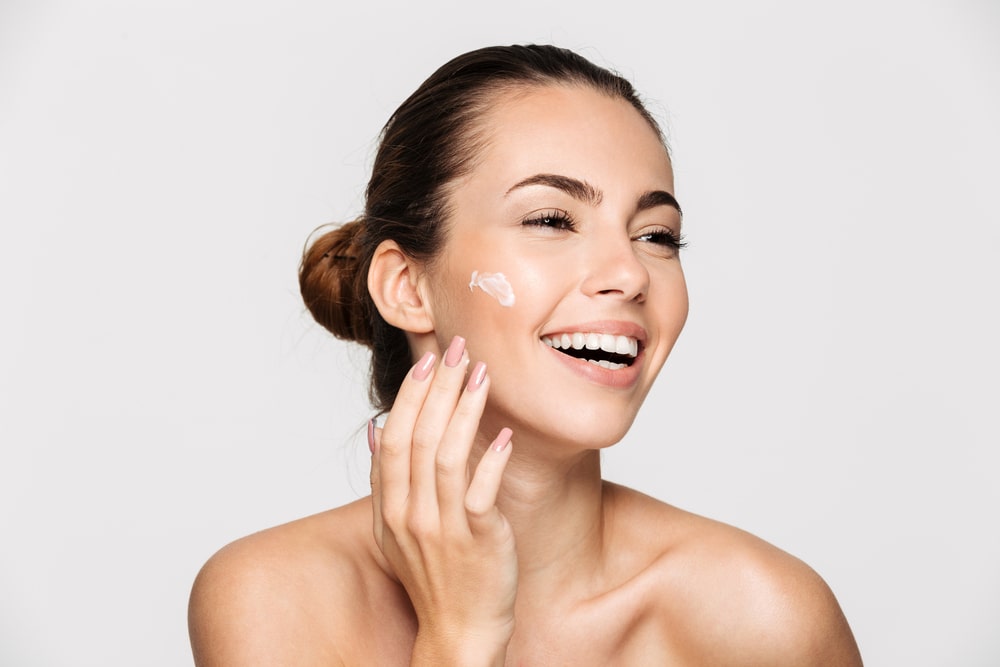
ADVANTAGES MOISTURIZING CREAMS
- Preventing damage to the skin caused by dryness.
- Providing protection from harmful environmental factors: Free radicals, UV rays, soot particles, and dirt.
- Minimizing the risk of makeup products: allergies and even skin irritation
- Improves overall skin‟s appearance: “anti-aging”
- Moisturizers as active cosmetics (cosmeceuticals): functional ingredients such as sunscreens, anti-aging, anti-wrinkle, skin lightening, anti-acne, anti-inflammatory, and antibacterial agents.
DISADVANTAGES MOISTURIZING CREAMS
- Skin reactions
- Adverse reactions
- Sun sensitivity
- Comedogenic and acnegenic
- Poisoning and toxic effects
FORMULATION OF MOISTURIZING CREAMS
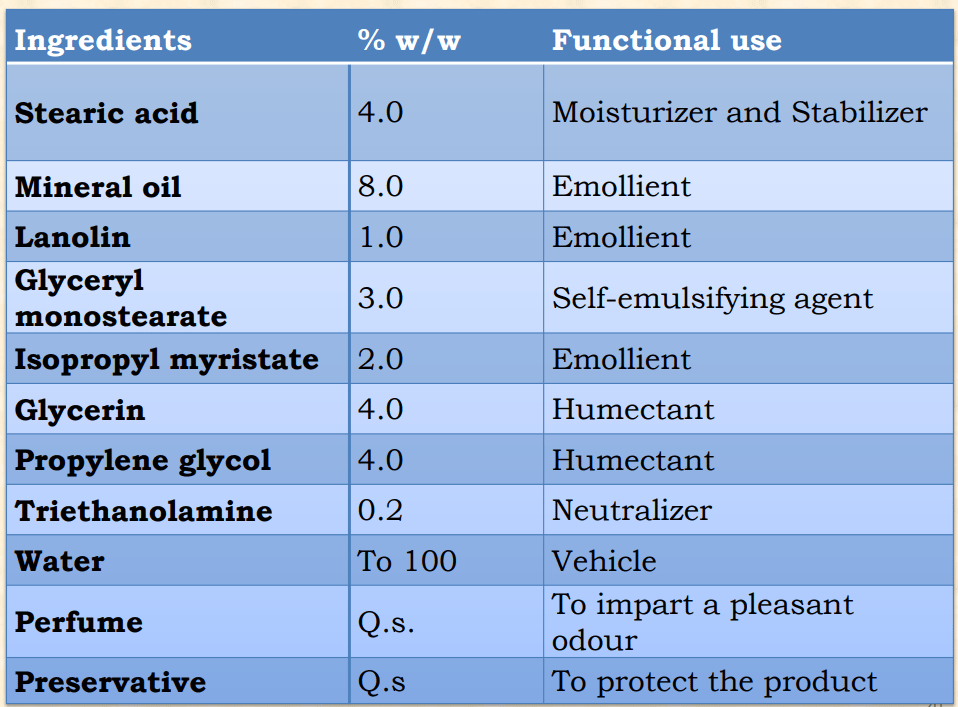
COLD CREAM
- Cold creams are semi-solid emulsions of water-in-oil (w/o) type of systems mainly consisting of waxes, oils, and water, intended for application to the skin.
- These creams have a long history of cosmetic use, and were initially described as an emulsion “based on beeswax as emulsifier and thickener”.
- The first original formula of cold cream has been attributed to the Roman physician Claudius Galen (or Galen) (about A.D 130- 200) by mixing water with molten beeswax and vegetable oils (olive oil and almond oil).
- later it was included in the first edition of the „Pharmacopoeia Londinensis‟ in 1618
Advantages of cold cream
- Cold creams provide prolong contact on the skin than any other pharmaceutical semisolid dosage forms and hence good moisturizing efficiency.
- These are not only moisturizing the skin but are also used for removing makeup and temporary tattoo marks.
- These creams spread more easily on the skin and are easily water-washable and wipe away.
- Cold creams prevent damage to the skin caused by dryness.
- They give the skin a smooth and silky feeling without any greasy shine.
- Non-irritating when applied to the skin.
- Depending on the formulation, cold creams are manufactured as beauty creams, night creams, cleansing creams, emollient creams, and all-purpose creams.
- Creams as active cosmetics (cosmeceuticals) are also used for beautification, regeneration, treatment, and maintenance.
- Therapeutic creams: Therapeutic creams are mainly formulated on the basis of their solubility in the oily phase or aqueous phase as well as their compatibility with certain emulsifying agents.
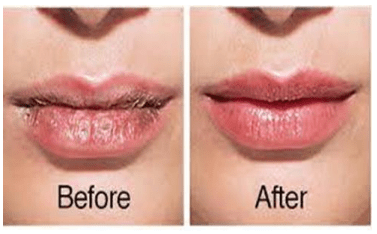
DISADVANTAGES
- Cold creams are unsuitable for most individuals having oily skin.
- They are quite difficult to stabilize, especially at high temperatures.
FORMULA: As per (USP 21- NF 16)
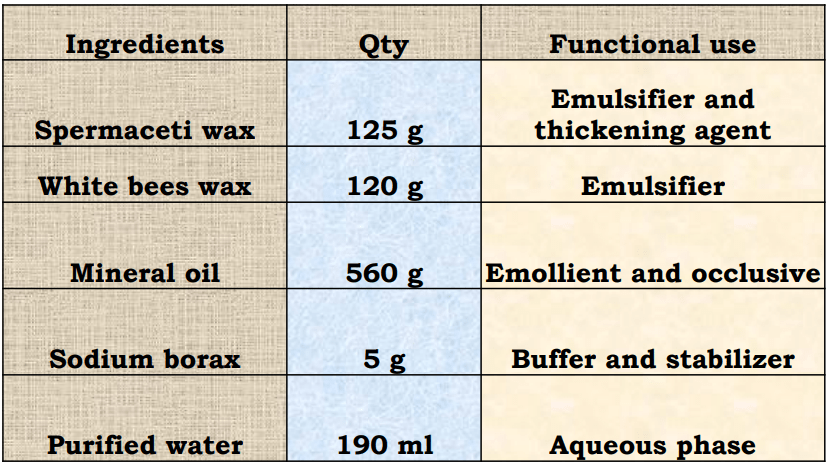
FORMULA (as per I.P)
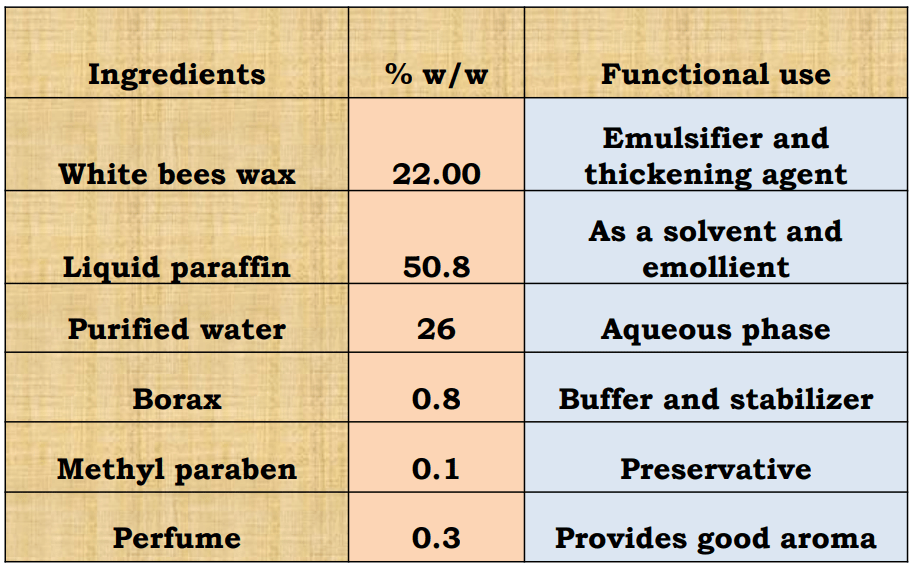
METHOD OF PREPARATION OF COLD CREAM
- Take beeswax and liquid paraffin in a china dish and heat in a water bath until it melts ( about 70 degrees C) (oil phase).
- In a beaker take water and add borax, heat the mixture to about 70 degrees C (Aqueous phase).
- The aqueous phase is added to the oily phase along with continuous stirring until a creamy emulsion is formed.
- Finally, perfume and methylparaben are added to the preparation.
- Transfer the cold cream to a suitable container.

VANISHING CREAMS
Definition
- It is also a skincare product that spreads easily as a thin film and seems to disappear rapidly when rubbed on the skin and hence termed a „vanishing cream‟.
- Generally, they will not leave a trace of application when applied to the skin.
- These creams are also referred to as ‘day creams’ as they are applied during day times.
- Vanishing creams render emollient, moisturize well, and protective action to the skin against environmental conditions.
- These are also known as „foundation creams‟ because they act as base creams for face powders to adhere to the skin effectively.
Advantages of vanishing creams
- Vanishing creams provide a non-oily feel and shiny texture.
- Suitable for all types of skin.
- They provide a smooth emollient base for the application of other makeup products.
- They can also be used as skin cleansers and moisturizers.
- Prevents skin chapping or roughening.
- They act as skin protectants which prevents damaging effects caused by environmental factors.
- They improve the adhesion property of the face powders.
- They are easier to apply and to wash and wipe off from the skin
- These are used daily usage irrespective of seasonal changes.
- Basic vanishing creams are promoted as other cosmetic preparations such as all purpose-cream, hand, and body creams, beauty creams, light creams, etc.,
- Since vanishing creams have a semi-matt finish, they can also be used without face powders to reduce the effects of oiliness on individuals having oily skin.
DISADVANTAGES
- The major disadvantage of vanishing cream is its drying effect on the skin.
- They may cause skin allergies due to certain ingredients present in their formulations.
- They may cause certain skin reactions such as itching, peeling, irritation, and reddening.
- They are less stable and the risk of contamination is higher.
Differences between cold cream and vanishing cream
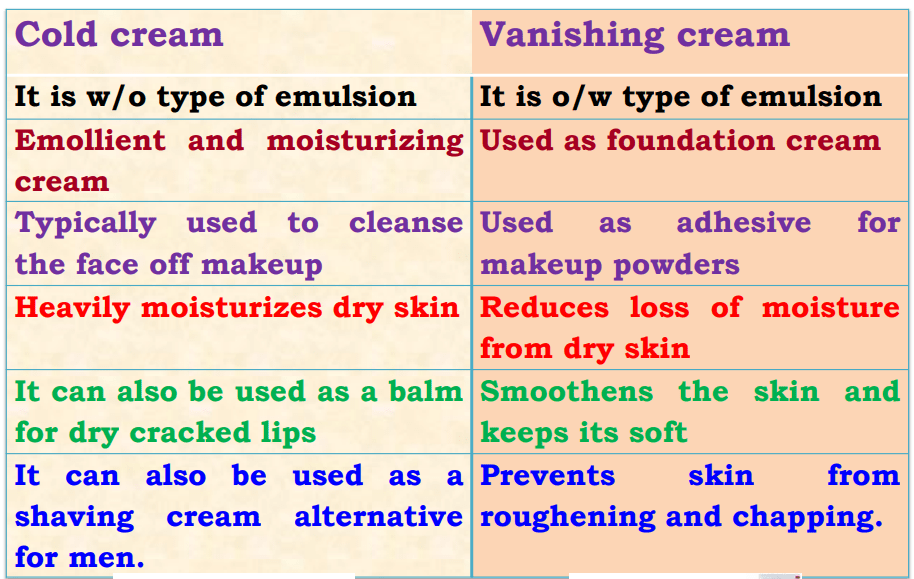
Make sure you also check our other amazing Article on: Calibration Of Measuring Glassware
